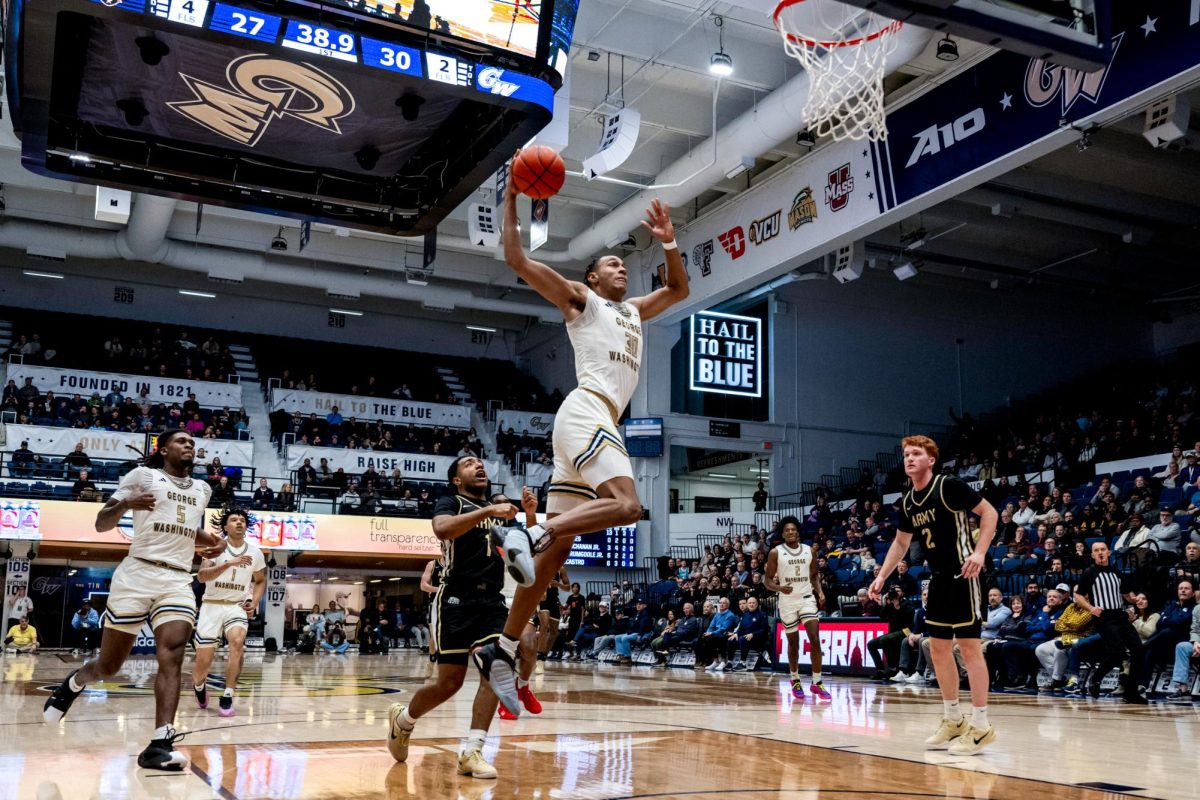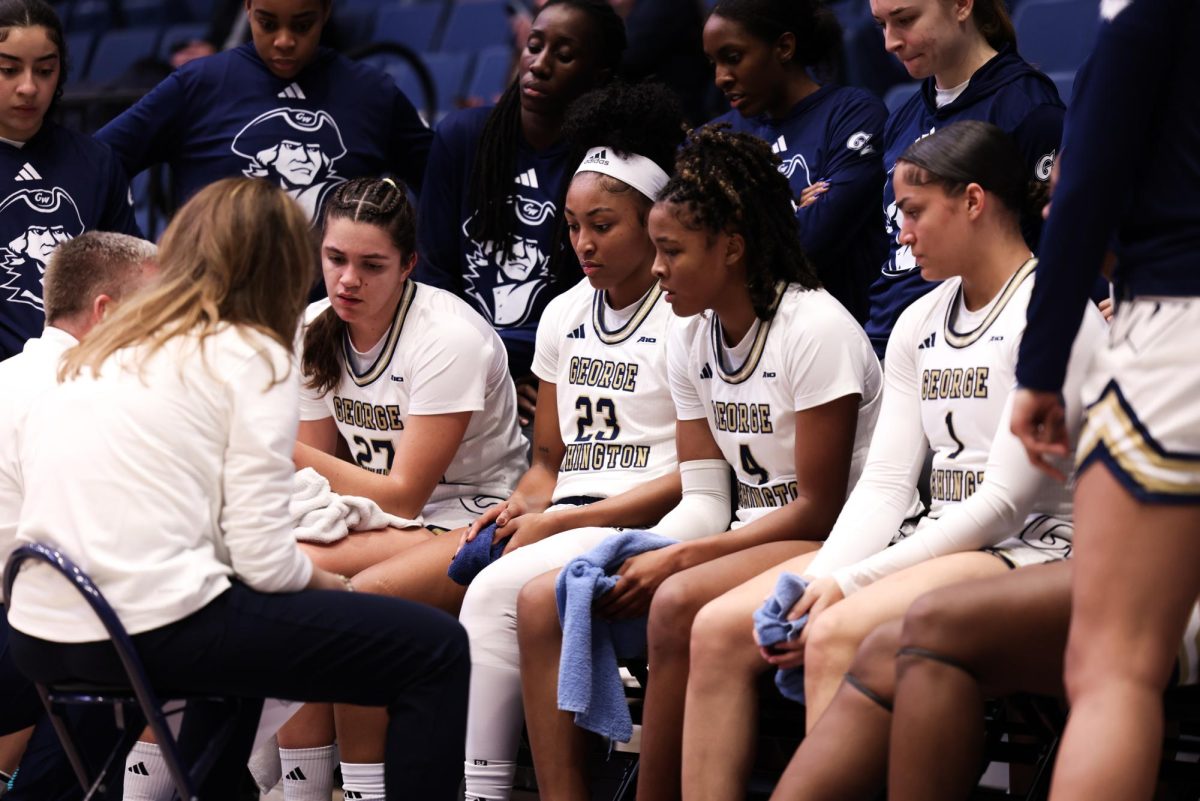GW is partially reconstructing the state-of-the-art Mount Vernon Campus tennis facility less than a year after it opened last spring, leaving the tennis teams possibly searching for another place to hold home meets this season.
The facility will need major reconstruction due to recent complications in the cement, GW athletic officials said. Irregular bumps on the court have rendered one of the six bubbled courts unplayable by NCAA standards, said Roger Lyons, Executive Director of Facilities.
“Since these are NCAA regulation tennis courts, the alteration of the surface area will affect the way a tennis ball bounces,” Lyons said.
He said the irregularities would not be noticeable on any cement surfaces other than a tennis court. Assistant Athletic Director of Facilities Tony Vecchione called the problem “a unique situation that will not occur anywhere else on the campus where new cement has been laid.”
The problem on the court became visible when the top half of the slab of concrete underneath the third court began to “curl,” Lyons said.
“After the cement is put down, it goes through a long process of setting and hardening that could take up to 10 years,” he said.
Because different areas of the cement took different lengths of time to dry, the cement curled and left slight irregularities in the court.
The curling occurs, Lyons continued, when the top half of the slab of concrete dries more quickly than the bottom half, creating a bump or a ridge in the court.
GW will have to repair or replace all the concrete under court number three but will make sure the repairs will not be necessary again by listening to advice from several consultants, Lyons said.
He said Clough Harbor and Patrick Cohen, structural engineer consultants that have been on the job since the tennis facility was built, are coming up with the best way to go about the repairs.
While the need for reconstruction was uncommon, Lyons said it was also uncommon to build courts on raised ground, as the Mount Vernon courts are.
“We are learning a lot from this experience,” Lyons said.
The prime focus of the repairs is to produce long-term results, Vecchione said.
“Our main goal is to make sure this doesn’t happen again,” he said.
Segal Construction Company, the team that built the facility, will also be doing the repairs, including replacing a portion of concrete under the air-compressed bubble.
The AEC Department has not decided exactly how to proceed with the repairs yet, but should have a precise plan soon.
The tennis facility is currently still in use but will be closed during construction, which Vecchione said will begin “as soon as possible.” He said he would like the courts to be back in use for the teams in the spring.
But Vecchione also admitted the tennis season schedule may be altered in accordance with the construction schedule.
“We won’t know until the construction schedule is definite,” he said.
Courts one, two, four, five and six are currently being used but court number three, where the effects of the cement curl are altering the surface, is not.
Before the facility opened, the GW tennis teams competed at a tennis country club in Virginia, and would likely compete there again for home meets if the courts are not ready in time.
GW officially broke ground on the new tennis courts last April, part of the multi-sport Mount Vernon Athletic Complex. The complex includes the bubbled courts, six outdoor courts, a softball field and a soccer/lacrosse field as well as state-of-the-art locker rooms and residence hall additions.






